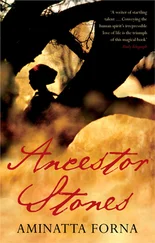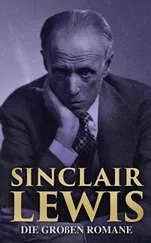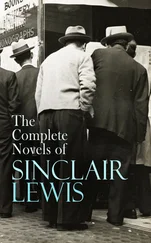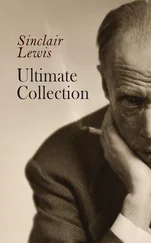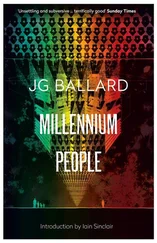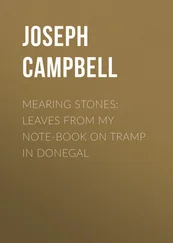In my extended reverie on the Queen Elizabeth II Bridge, my disinclination for a meeting with Mocatta, I tried to invade the consciousness of the most susceptible of the walkers, Katherine Cloud Riise (known as Track). I wanted to force them across their bridge, into Canvey. Please allow me to bask — while O’Driscoll searches his pocket for a pound coin, the bridge toll — in the exhaustion and triumphs of your epic march.
Without blisters. (Where did she get that name?)
WELCOME TO CANVEY, TWINNED WITH COLOGNE (DIST 3), ROMAINVILLE, ROSCOMMON.
That sounded about right: a traffic island. A raised strip of grass that summarised all any traveller would want to know about the estuarine settlement. Shark fin embedded in thin soil (silver bright): metaphor for lost fleet. Armada beacon. Loose rocks representing prehistory, Mudhenge. A beach of bird seed and broken shells. Drive around it in twenty seconds, appreciating the distant refineries, the big skies. A red rectangle planted by the sponsors: McDONALD’S EXIT.
Trapped in O’Driscoll’s silver space-cruiser, my eyes bled with envy for that Canvey traffic island, the quiet climb through the village of Benfleet with its church (St Mary’s), its graveyard and ‘licensed’ Dickens restaurant. Broad verges, bare trees coming into flower. The long curve to the red tower with its booster mast, the glimpse of the river and the sudden remembrance of the A13: back on the road.
The pilgrims — Jimmy, Danny, Track — ploughed on in grim silence. The job had to be completed, miles of suburban sprawl, half-towns, broken country. Shops and cafés they won’t have time to enter. A day’s walk. Shoulders chafing under the straps. Heads clear, eyes bright …
My own are failing. I blink hard against the repetitive bridge supports, the hawsers. Too much floating matter, too many scratches. Like film-stock from the year of my birth: 1943. Robert Mitchum and William Boyd (Hopalong Cassidy) in Riders of the Deadline . There are gaps in the fog, clear pools of vision (the illusion that I can still make out the Southend walking party). The rest is completely lost.
Tock is staring at me, mouth open. They say he can catch bullets in his teeth (which might explain the state of them). A wad of gum like a cancerous growth on the pad of his tongue. ‘Arright, son?’
Track’s walk is right. But I’m not on it. Not with her. I can’t hold O’Driscoll’s cab much longer. In the clouds. Above water. Between Essex and Kent. The one section of London’s orbital motorway that is not acknowledged as the M25, different rules, different space-time continuum.
Cruelty: they call the A13, at the point where it insinuates itself into the Southend diaspora, ‘London Road’. Because, it is obvious now, the bias is out — west. Aspirational. Hadleigh is Mill Hill translated: Jewish colonial mansions, fancy ironwork, security cameras, multiple garages, gardeners. Pillars. Porticoes. Steps. Houses for retired dictators: Saddam Hussein, ‘Baby’ Doc, Idi Amin. (No, that’s too fanciful. I’m imposing my riffs on the perceptions of the walkers. They see new things — absence of people, of noise, litter. They notice Shipwrights Drive, a striking Thirties modernist house. The quality of light and air owing something to river and hill and the long road that has snaked all these miles from the grime of Aldgate.)
Track’s notebook is almost full. Her miniaturist grid: windows of colour. Half a page, she reckons, for Southend. With one left over for the sea. Tiny photographs smudged with blues and yellows. Words. And parts of words. A union flag at a leaded window: THE CON. (SERVATIVE CLUB deleted.) A mobile phone mast rearing above an A13 sex shop (with awning): INTIM (Eurostyle). FOR ADULT SINGLES & COUPLES.
Monumental sky with lowering cloud base, over the Estuary, the power station on the Isle of Grain.
Jimmy is still looking for prospects, cold irony, something to replace the warmth of booze, the missing madness. He spurns this entire run, the hobble from Leigh-on-Sea to Chalkwell: dull street patterns, too many garages, not enough dereliction. He lines up the Southend sign, deep blue on a bed of daffodils — then let’s it go, too soft. WELCOME-TO-SOUTHEND, TWINNED WITH THE POLISH RESORT OF SOPOT. Too many words. Too many letters to paint. Too much hassle.
Two hours in, London Road endless, small shifts between swallowed villages, ill-founded optimism, they rely on Danny, his black bag, his brass instruments. Is this still the A13? Can Danny confirm the vein of heat running back to Aldgate Pump? This walk, with its false starts, detours, interruptions, dramas and fictions, does it play? And where is the wolf?
Humans were back: twitching junkies, pavement smokers, ponytails who walked very fast, with black bags, bumping into lost old folk on sticks. SEAFRONT RAPE TRIAL COLLAPSES. Frying fish, petrol, hyacinths, sea breezes.
Suburb to pre-urb to urb (sizzling like spit on a hot plate). Then suburb again, broad avenues, fields for sale (development plots), first rumours of the military (MOD).
Track spotted it and Jimmy took the photograph. He had been preoccupied, mid-afternoon, by jailbait, scarlet-mouthed on mobiles, mobbing bus stops, waiting for pick-ups, the family car. Blackcurrant outfits, loose ties and short skirts — like one of the pubs he used to patronise on the edge of the City. Swish, swish. The cars were good too. Large, shiny. German, Japanese, American. A few vintage pieces. All his fantasies congealing in this unlikely nowhere, Thorpe Bay to Shoeburyness. End of the line.
A pale-blue people-carrier parked in the driveway of a crumbling Art Deco house — the twin of the vehicle O’Driscoll was piloting into Kent — offered for sale. And on its side, Track registered the significance, calling Danny, was a hand-painted art work: the wolf pack. These were louche beasts, yawning seasiders, paying homage to their pack leader: the brass wolf of Aldgate Pump. (Jack London meets London Road, Southend.)
Message received, chase over.
It only needed Danny to confirm, after they crossed the railway, drifted into Shoeburyness, that the A13 had finally given up the ghost. Nothing dramatic. A zebra crossing, a bend, a turn-off down Campfield Road — vanished. Rebranded as the B1016. Who has heard of that? Who cares?
They kissed. Danny’s beard. Track’s scratchy red hair. Jimmy combing his bald spot. Shoeburyness Outdoor Leisure, Camping Showroom: they flopped into picnic chairs. They examined fire-sale flying jackets (£9.99) and laughed over Diesel boots at £39.99. This was MOD territory. A pub named after a character in Dad’s Army . A railway station. Barracks. A bleak shore. Oil tankers blocking the horizon. Track searched for an unbroken shell, to be inked for the last slot on her grid, but she didn’t find one.
They didn’t know it, but they were out of the story: liberated. Danny and Track, no marriage, stayed together, private vows in St Mary’s Church, East Ham. One on either side of the scarlet ley line. Under the restored wall painting.
Jimmy made his vows too, a betrothal to fame and property. (He got one of them.) The walkers, from this point, were on their own.
As the loving couple wandered up the hill towards Danny’s Plotlands chalet, in gentle twilight, rooks, midges, Track told him how she got her name. Katherine/Cat. A favourite film, favourite movie star: Bob Mitchum. Track of the Cat . Family drama with highly symbolic panther (like the wolf of the A13). Danny was happy to be entrusted with this secret, Track’s heart. The lie meant nothing to him. And Track was glad, after all this time, to be rid of it.
As O’Driscoll’s motor came off the bridge, my eye went out. The stronger one: capped, lens-hooded. The familiar pattern of encroaching motorways, low hills, chalk quarries, was soft, grainy, Impressionist. The abdication of the middle ground finally achieved: ‘I can’t see.’ The windows failed. Bluewater became its celestial double, it shimmered. The salt mound at Swanley interchange was one of Monet’s haystacks. The fuzz of movement uncorrected. North Kent: a film by Stan Brakhage.
Читать дальше




